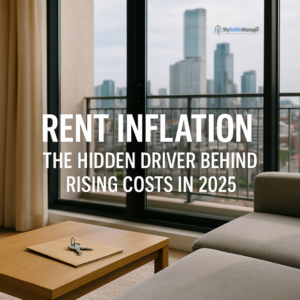In 2025, the battle against inflation continues and at the heart of it is something affecting millions of Americans: rising rent prices. While grocery costs and gas prices often make headlines, it’s housing specifically rent that has quietly become one of the most powerful forces pushing inflation higher.
According to April’s Consumer Price Index (CPI), shelter costs made up over half of the month’s 0.2% inflation increase. In simpler terms, your monthly rent isn’t just draining your wallet it’s also helping shape national economic policy.
A Closer Look at the Rent Surge
Over the past five years, renters have seen steep increases across all housing types:
-
Apartment rents have soared nearly 29%, now averaging around $1,900/month.
-
Single-family home rentals are up 43%, costing renters roughly $2,300/month.
-
Meanwhile, household income has only grown 23%, not enough to keep pace.
This disparity highlights the growing burden on renters, many of whom are spending an increasingly larger portion of their income just to keep a roof over their heads.
The Data Gap: Why Official Inflation Doesn’t Always Match Reality
You may have seen headlines suggesting rents are cooling but CPI data tells a different story. That’s because the federal government’s method of measuring rent lags behind real-time market data.
Private platforms like:
-
Apartment List report median rents around $1,400, and
-
Realtor.com places them closer to $1,700,
Indicating that some markets have stabilized or even declined. However, the CPI uses a rolling sample that includes long-term leases, which updates more slowly and doesn’t reflect month-to-month shifts.
So while some renters are feeling relief, official inflation figures still show rents and inflation overall on the rise.
What’s Behind the Rental Cost Pressure?
The story gets even more complicated. After a brief period of rent stabilization due to a surplus of new apartment buildings in recent years, the pipeline is drying up.
Here’s why:
-
Construction costs remain high, squeezing developers.
-
Permits for new housing are declining, slowing future supply.
-
Financing is harder to secure, especially with higher interest rates.
This shift threatens to undo any short-term rent relief, potentially driving prices back up due to constrained inventory. Economists now warn that a second wave of rent inflation may be coming even as the first has barely let up.
Shelter and Inflation: Why It Matters
Shelter costs account for nearly one-third of the CPI, making it the largest single component in how inflation is measured. In early 2023, shelter inflation peaked at 8.2%. Although it has cooled to 4% annually as of this writing, that’s still higher than pre-pandemic averages, which hovered around 3.3%.
This means that even if prices for food, gas, and goods stabilize, housing costs alone can keep inflation stubbornly high, making it harder for the Federal Reserve to justify lowering interest rates.
What Comes Next?
There’s cautious optimism that rents will continue to moderate, especially if the economy slows and demand softens. But several warning signs could counter that trend:
-
New tariffs and trade policies could push other costs up, offsetting rent declines.
-
Wage stagnation may make even slightly cheaper rent unaffordable to many.
-
A supply crunch from halted construction projects could spark a rent rebound.
Economists are watching the housing market closely, as it could determine whether inflation returns to the Fed’s target or remains a long-term economic headwind.
Final Thoughts
Rent inflation is more than a budget buster it’s a central force in shaping America’s economic future. As policymakers work to stabilize inflation, they must grapple with the deep structural issues in housing from supply shortages to affordability gaps and inconsistent data reporting.
For renters, this means navigating a complex landscape where even modest gains in income are often swallowed by rent hikes. And for the broader economy, it means the fight against inflation is far from over because until housing is truly affordable, stability will remain out of reach for many.
Source: Rent increases are driving overall inflation – but it’s a lot more complicated than you think

